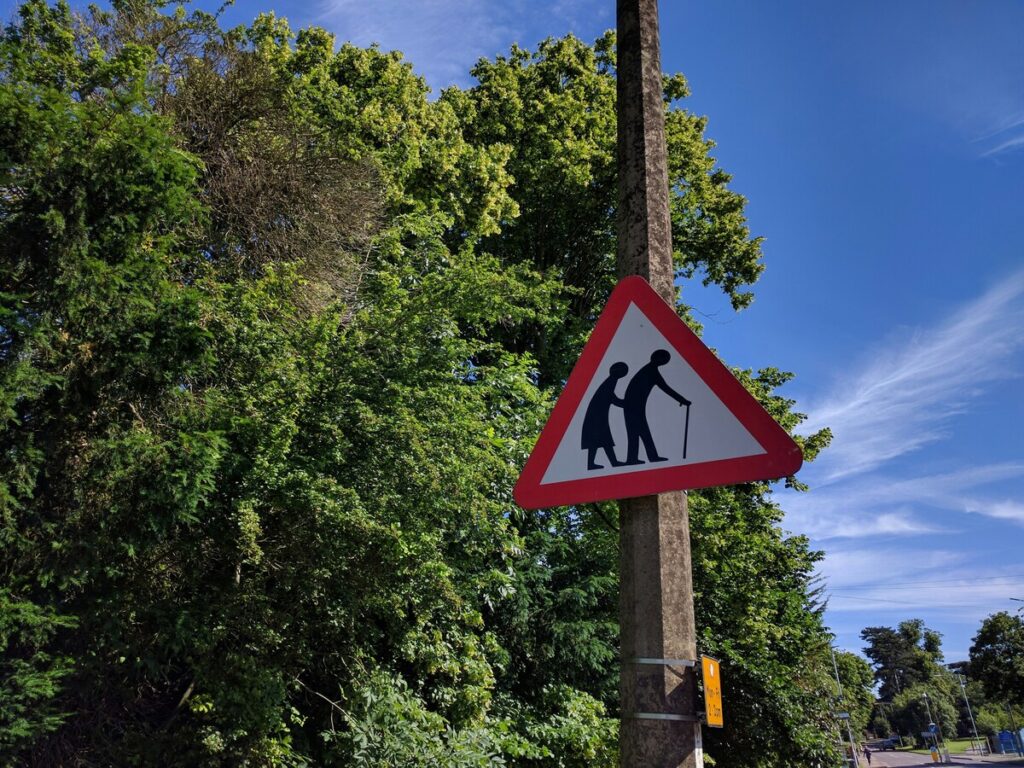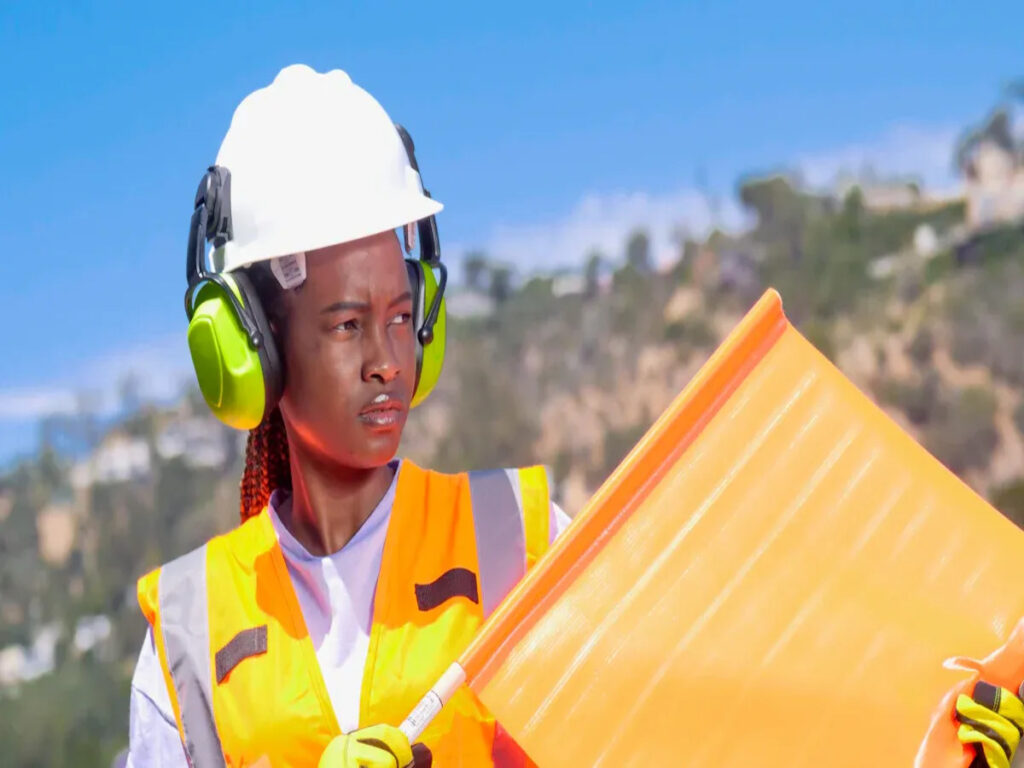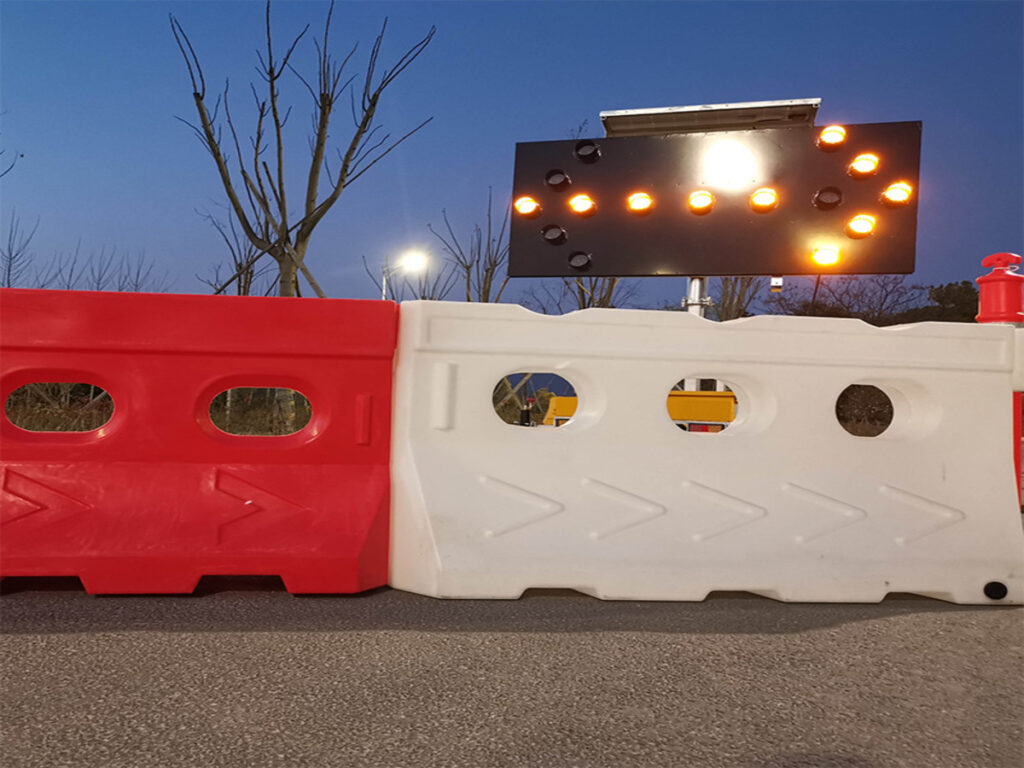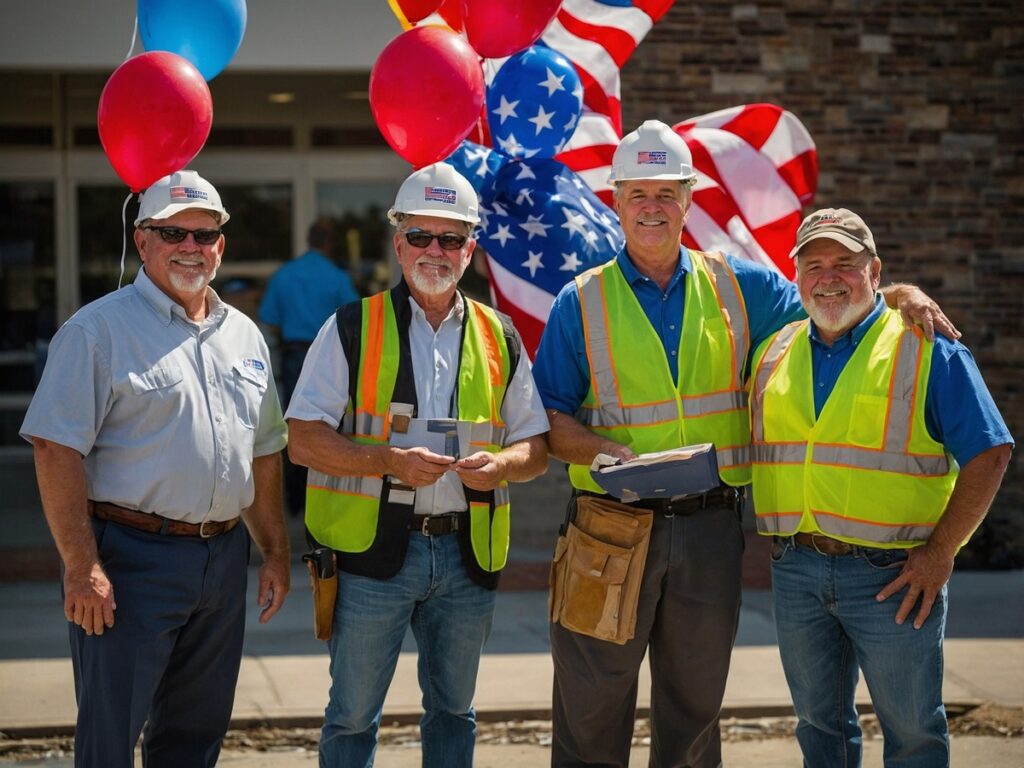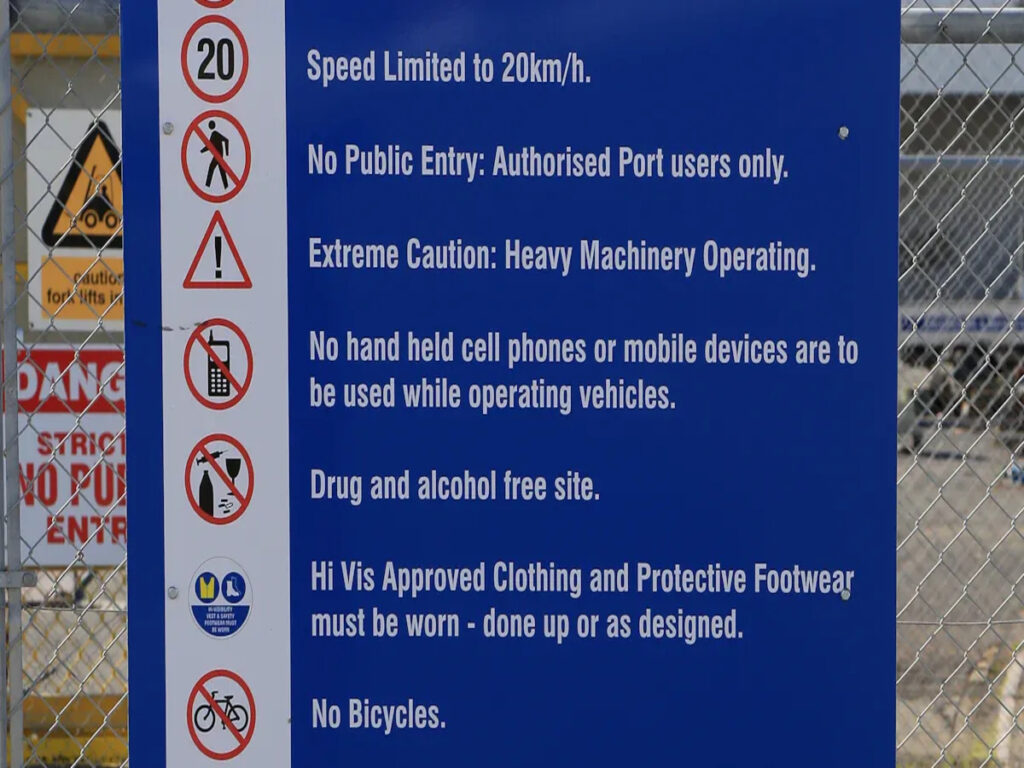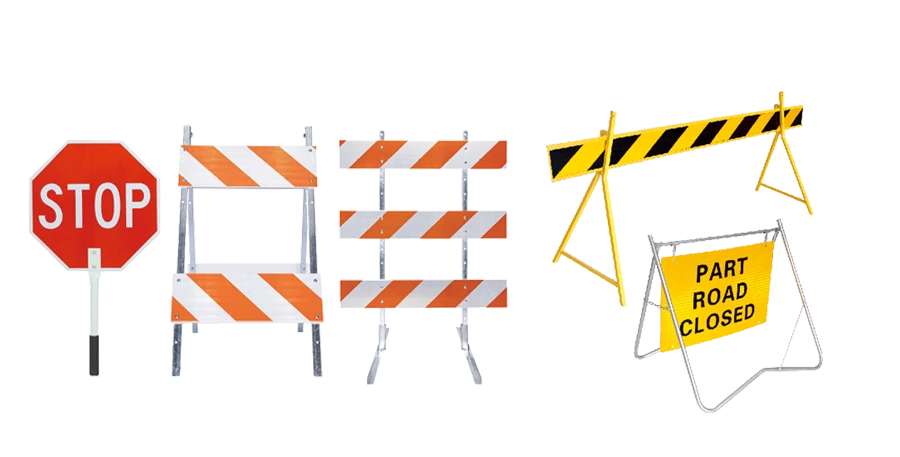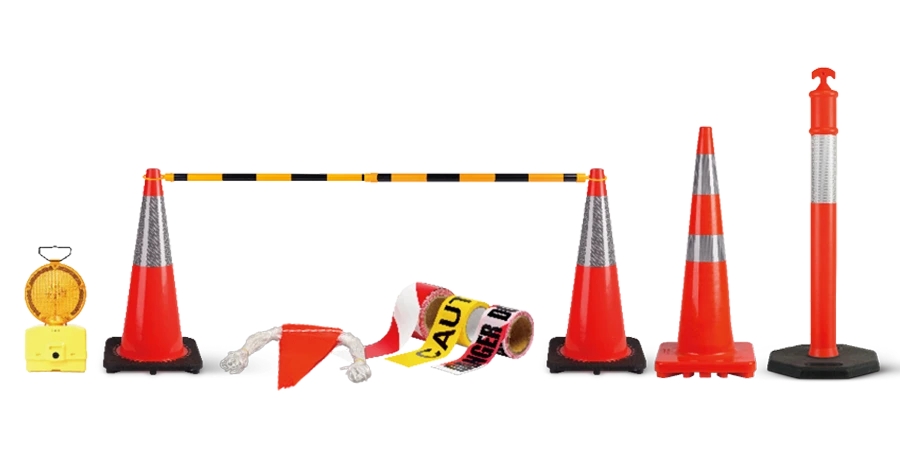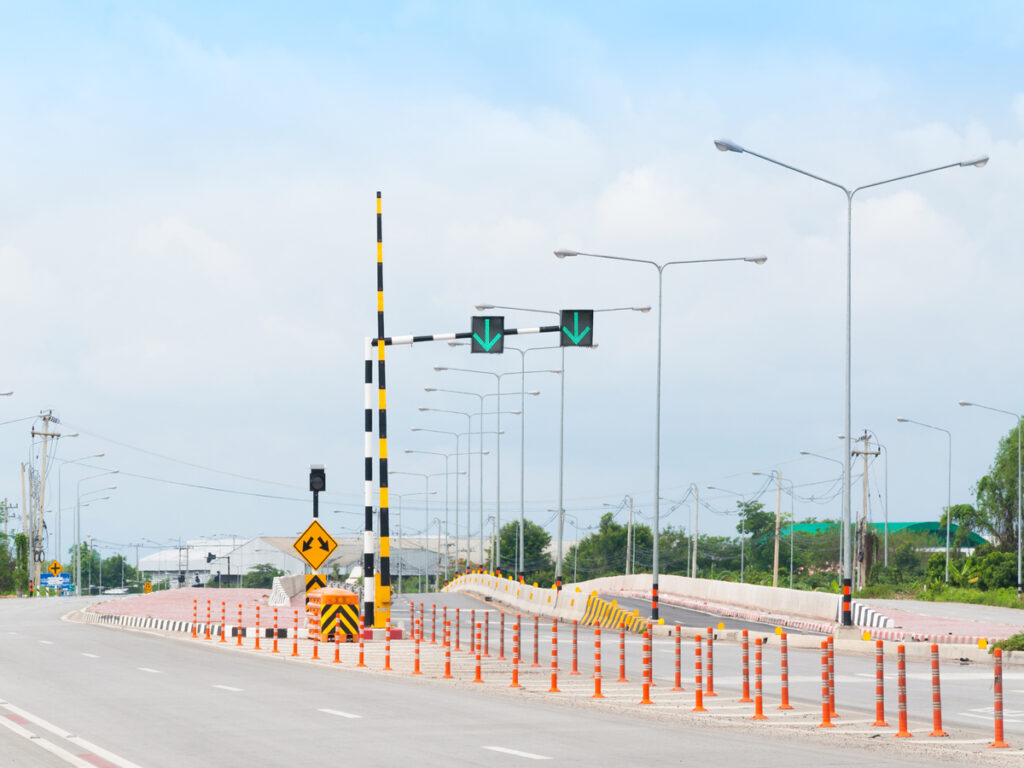
Installing a bollard usually requires planning permission for permanent installations. Rules must be followed, such as placing traffic bollards 3 to 5 feet apart to ensure public spaces remain accessible. However, traffic delineator posts offer a simpler solution. These flexible traffic posts with weighted bases don’t require permits since they don’t penetrate the ground. You can use these portable posts in various locations without violating regulations. They are lightweight and temporary, making them a more convenient option than permanent bollards.
OPTRAFFIC provides high-quality, flexible traffic delineator posts that are perfect for temporary traffic control and public space management. These traffic posts are easy to set up, highly visible, and offer a quick solution for guiding traffic or marking hazards without the need for permits or complex installation processes.
Key Takeaways
- You don’t need planning permission for portable traffic markers. They are easy to use for temporary needs.
- Portable markers can be used for up to 72 hours without permits. They are great for events or short projects.
- These markers are simple to move and change, helping manage traffic in different situations.
- Reflective strips on the markers make them visible at night. This keeps both walkers and drivers safer.
- Picking certified markers follows safety rules and avoids legal problems.
The Short Answer
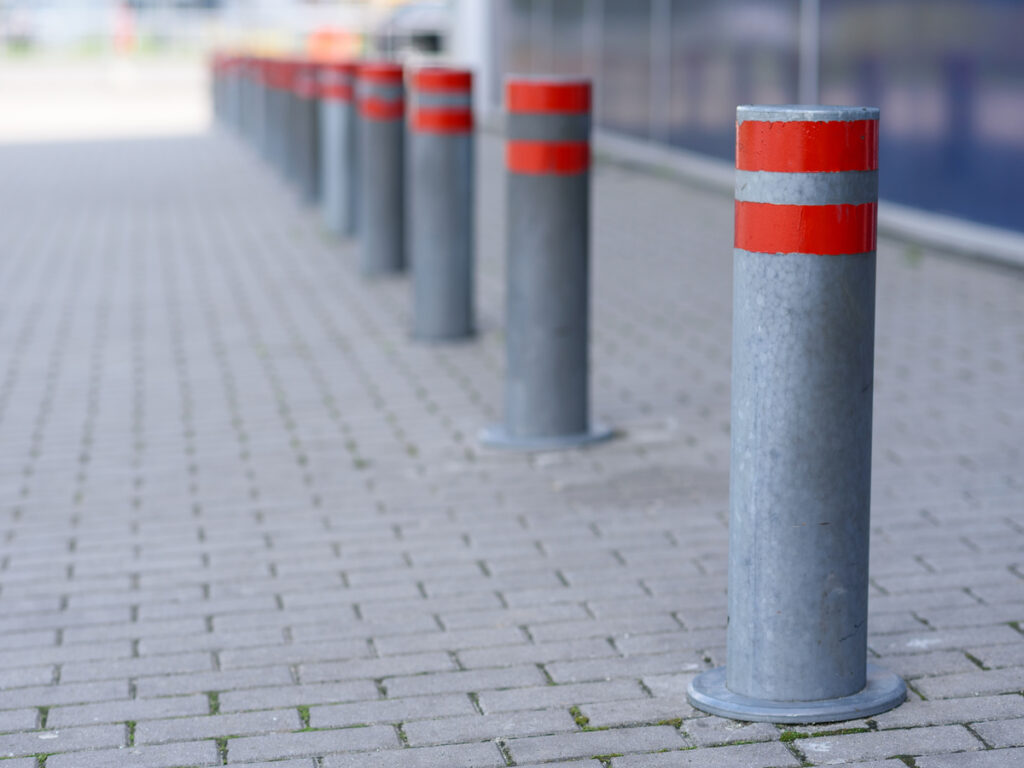
Permanent Bollards vs. Portable Delineators
Fixed Installations Require Permits
Permanent bollards often need planning permission to install. This is because they go into the ground and may affect public areas. For example, bollards on roads must follow rules for safety and accessibility. Local councils manage this process, and you must follow their rules.
On private property, the rules can be different. You might not need approval for bollards in parking lots. Still, you must space them properly to avoid blocking emergency paths or causing problems. Permanent bollards take time and effort to plan and install.
Portable Options Are Typically Exempt
Portable traffic posts are easier to use. They don’t need planning permission because they don’t go into the ground. Their heavy bases keep them steady without harming surfaces. You can move them around and adjust their spacing for different needs, like events or road closures.
Since portable posts are temporary, they often follow the 72-hour exemption rule. This means you can use them for short-term projects without needing permits. They are great for places where permanent bollards don’t work well.
Portable posts save time and make things simple. You can set them up fast, move them when needed, and take them away easily. This makes them a favorite for businesses and event planners.
Want to learn more about the differences between Permanent Bollards and Portable Delineators? Check out “Understanding the Difference Between Road Bollards and Delineators” for a detailed comparison to help you choose the best solution for your needs.
When You Need Permission
For Permanent Bollard Setups
Approval for Public Roads
To put a bollard on a public road, you need council approval. This ensures it won’t block traffic or harm pedestrians. You must share detailed plans, like its purpose and location. Councils check things like accessibility and emergency access. Spacing is very important. Bollards too close can block wheelchairs or strollers. Councils also review materials and designs for safety. This process takes time, so plan early for public road installations.
Rules for Private Property
On private land, bollard rules are less strict. You might not need permission for parking lots or driveways. Still, follow good spacing practices. Leave enough room for cars and people to pass safely. Even without permits, make sure bollards don’t cause problems. Always check local rules to see if you need approval.
Special Situations
Historic Areas
If you want a bollard in a historic area, rules are stricter. These places protect their look and structure. Councils may ask for certain materials or designs to match the area. Spacing matters here too. Bad placement can ruin the look or harm the site. Always talk to local officials before starting.
Highways and Busy Roads
Putting bollards near highways is harder. You might need to work with transport agencies to avoid traffic issues. Temporary lane closures or detours could be needed. Proper spacing helps cars move safely around the area. These projects need careful planning and more approvals. If it’s near a highway, expect a longer process.
Why Portable Traffic Delineators Avoid Red Tape
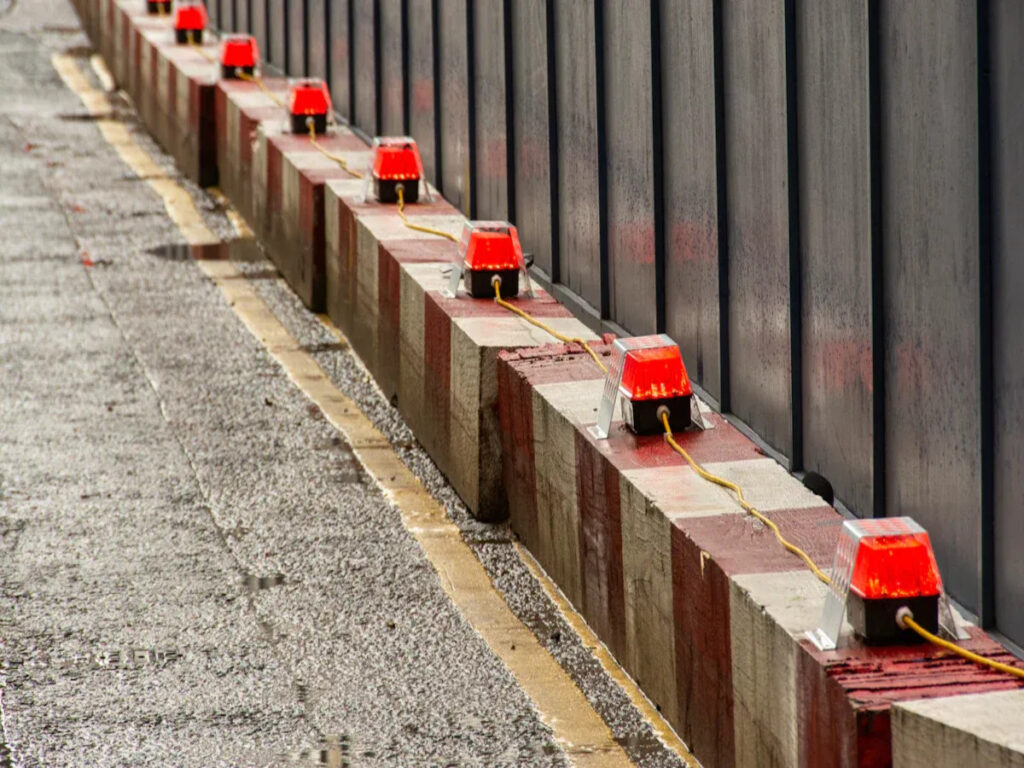
3 Legal Advantages
No Ground Penetration
Portable traffic delineators don’t need to be drilled into the ground. This makes them easier to use than permanent bollards. Instead, they stay stable with a strong base. They are simple to set up and don’t harm roads or sidewalks. For example, construction sites use them to keep roads safe without causing damage. Their design avoids the need for long approval processes, making them great for temporary use.
Temporary Duration Rules
You can use portable plastic delineators for up to 72 hours without permits. This rule is perfect for short-term projects like events or temporary road closures. Since they aren’t permanent, they follow rules for temporary traffic setups. Laws like Section 616.6 highlight how these tools reduce paperwork. By following these rules, you save time and focus on completing your project.
Mobile Repositioning
Portable delineators are easy to move around. You can change their position to fit different needs. This is helpful for events or construction areas where layouts often change. Moving them ensures safety and keeps them visible. Legal examples show how mobile posts improve safety by adjusting traffic flow quickly. Their flexibility makes them a smart choice over fixed bollards.
Compliance Features
Reflective Strip Certification
Many delineators have reflective strips that meet safety standards. These strips make them easier to see in the dark, improving safety. For night events or work zones, reflective posts add extra protection. Following rules like the Manual on Uniform Traffic Control Devices (MUTCD) helps avoid legal problems. Using certified products shows you care about safety and following the law.
Non-Damaging Materials
Portable delineators are made from materials that don’t harm surfaces. They are built to handle tough conditions without causing scratches or cracks. For example, bases made of rubber keep them steady without leaving marks. This makes them safe for delicate areas like historic sites. Their design meets safety and environmental rules, ensuring they are reliable and compliant.
Tip: Always choose certified and high-quality delineators to meet safety rules and ensure they last.
Top Use Cases for Permit-Free Delineators
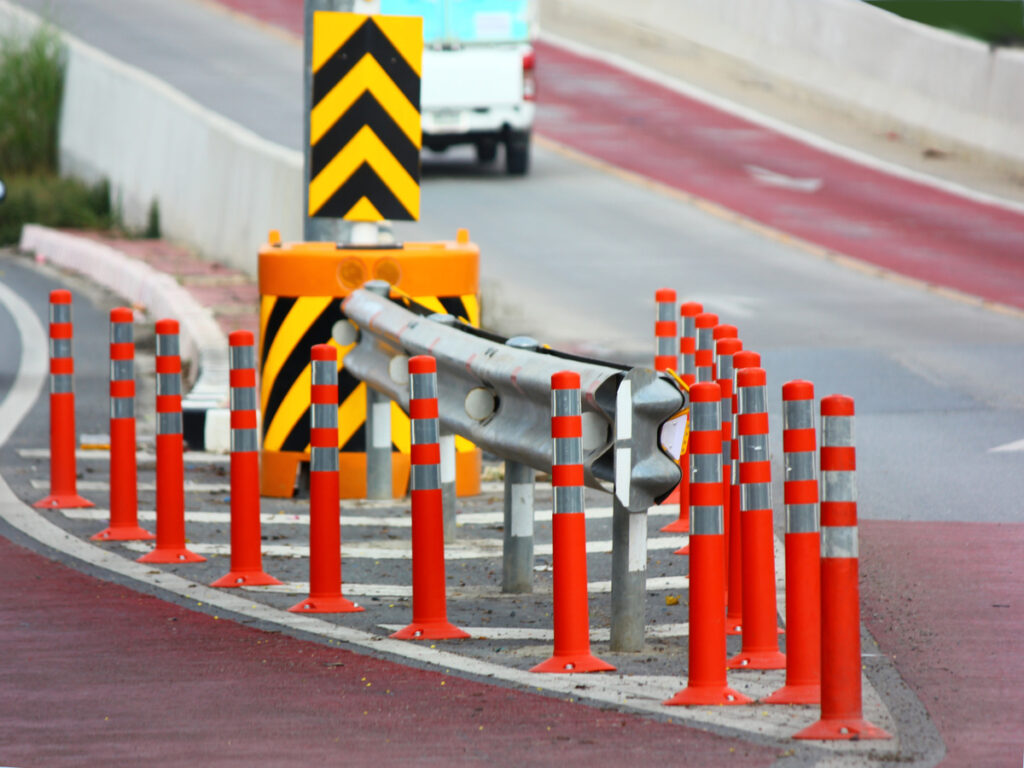
Event Management
Concert Crowd Control
Handling big crowds at concerts can be tricky. Portable delineators help guide people and keep things organized. Use them to make clear paths, separate entrances and exits, or block off certain areas. Their reflective strips make them easy to see in the dark, perfect for night events. Unlike permanent bollards, these are light and simple to move. You can adjust them as the crowd changes. This makes events safer and smoother for everyone.
Construction Sites
Short-Term Lane Closures
Construction areas often need temporary lane closures for safety. Portable delineators are a strong and affordable choice for this. Their heavy bases stop them from tipping if bumped by a car. Test one first to ensure it fits your project’s needs. These posts follow safety rules without needing long approval processes like permanent bollards. You can move them to change traffic flow, keeping workers and drivers safe.
Retail & Hospitality
Pop-Up Outdoor Seating
Portable delineators work well for temporary outdoor seating at cafes or restaurants. Use them to mark boundaries so customers feel secure. Their soft materials won’t damage sidewalks or parking lots. Unlike fixed bollards, these can be moved or removed easily. This lets businesses adjust for seasons or special events. They are a budget-friendly way to add seating without permanent changes.
Tip: Pick delineators with reflective strips and strong bases for safety and compliance everywhere.
3-Step Compliance Checklist
Know Time Limits
Use Under 72 Hours
Temporary traffic delineator posts are great for short-term projects. You can use them for up to 72 hours without needing permits. This rule applies to most temporary traffic setups, making events or construction zones easier to manage. For example, temporary traffic stripe tape has time limits based on use. If used for less than 14 days, follow the manufacturer’s instructions. For longer use, stricter rules apply. Always check guidelines to stay compliant and avoid delays.
| Type of Tape | Time Limit | Application Rule |
|---|---|---|
| Temporary Traffic Stripe Tape | Over 14 days | Must follow detailed specifications. |
| Temporary Traffic Stripe Tape | 14 days or less | Must follow the manufacturer’s instructions. |
| Temporary Pavement Marking Tape | Over 14 days | Must follow detailed specifications. |
| Temporary Pavement Marking Tape | 14 days or less | Must follow the manufacturer’s instructions. |
Check Area Rules
Stay Out of Protected Zones
Before placing traffic delineator posts, make sure the area isn’t protected. Local rules often limit activities in sensitive zones to keep them safe. For example, Bainbridge Island allows certain uses under Section 16.20.040. King County has strict rules for critical areas. These laws ensure temporary items like delineators don’t harm the environment. Checking local codes helps you avoid fines and follow environmental rules.
| Municipality | Code Section | Description |
|---|---|---|
| Bainbridge Island | Sec. 16.20.040 | Exemptions |
| King County | Title 21A.24 | Rules for critical areas |
Pick Certified Products
Look for UKCA/CE Marks
Certified traffic delineator posts are safer and follow the rules. Choose traffic delineator posts with UKCA or CE marks to meet safety standards. A 2017 study showed that certified traffic delineator posts lower the risk of violations. Items without certifications are five times more likely to break rules. Using certified delineators or bollards shows you care about safety and following the law. Always check for certifications before buying or renting.
| Study Name | Key Findings |
|---|---|
| Certificate Study (2017) | Providing certificates lowers violation risks; missing certificates increase risks by 5x. |
| eFiling Beta Pilot (Current) | Improves electronic compliance data collection, helping target noncompliant products. |
Tip: Certified products make setups safer and speed up approval for temporary projects.
Portable Delineator Solutions
Best-Selling Kits
Basic Reflective Set
The Basic Reflective Set is a favorite for many users. It includes strong posts made from materials like PVC or plastic. These posts bend easily, so they don’t break when hit. Each post has a heavy base to keep it steady, even in wind. Reflective strips on the posts make them easy to see at night or in dim light. This set is great for construction sites, events, and short-term road closures. It’s affordable and simple to use, making it perfect for temporary projects.
Solar-Powered Night Kits
Solar-Powered Night Kits are great for nighttime use. These kits have posts with solar lights that charge during the day. At night, the lights turn on, improving safety and visibility. They work well for traffic control, concerts, or emergencies after dark. The traffic posts are made from tough materials like ABS or polyurethane, so they last a long time. You can move them easily and set them up quickly. These kits are eco-friendly and practical, making them a smart choice for temporary needs.
| Type of Delineator Post | Material | Flexibility | Base Type | Visibility | Common Uses |
|---|---|---|---|---|---|
| Flexible Delineator Post with Base | PVC / Plastic | High | Weighted Base | Excellent | Roads, Construction, Events |
| Flat Top Delineator Post | Plastic / Rubber | Medium | Fixed Base | Good | Parking Lots, City Areas |
| Reflective Delineator Post | ABS / Polyurethane | Low | None | Very High | Night Traffic, Danger Zones |
Rental Benefits
Save Money for Short-Term Use
Renting traffic delineator posts is cheaper if you only need them briefly. Instead of buying, rent just the number you need for your project. This avoids storage and upkeep costs. For example, renting for a weekend event keeps costs low while meeting safety needs. Renting also lets you try premium options, like solar kits, without spending too much upfront.
Easy Local Delivery
Many rental companies deliver delineators right to your site. This saves you time and effort, especially for urgent projects. Some services even help with setup to ensure safety rules are followed. Choosing a rental with delivery lets you focus on your work while they handle the rest.
Tip: Renting delineators is an easy and budget-friendly way to manage temporary traffic safely.
Permanent bollards often need permission, which slows down projects. Portable traffic posts are a better choice for short-term needs. These posts are simple to set up, move, and take down. This saves both time and energy.
- Reflective tape makes them easy to see at night.
- Strong polyurethane bends if hit, protecting cars and people.
- Unlike fixed bollards, portable posts adjust to changing spaces.
They are flexible and affordable, making them useful in many situations.
FAQ
Can portable delineators stay overnight?
Yes, but remove them within 72 hours. This follows temporary use rules. Make sure they stay visible and steady for safety.
Do portable delineators make areas safer?
Yes, they help by marking boundaries and guiding traffic. Reflective strips and strong bases keep them stable and easy to see.
Can portable delineators be used on all surfaces?
Yes, they work on asphalt, concrete, and grass. Their bases don’t scratch or damage, making them good for delicate areas like historic sites.
Is insurance needed for portable delineators?
You need insurance for public spaces. Check local rules to be sure. On private property, insurance might not be required, but it’s smart to confirm.
How can you follow local rules?
Use a checklist: keep use under 72 hours, avoid protected zones, and pick certified products. This helps you follow laws and avoid fines.

